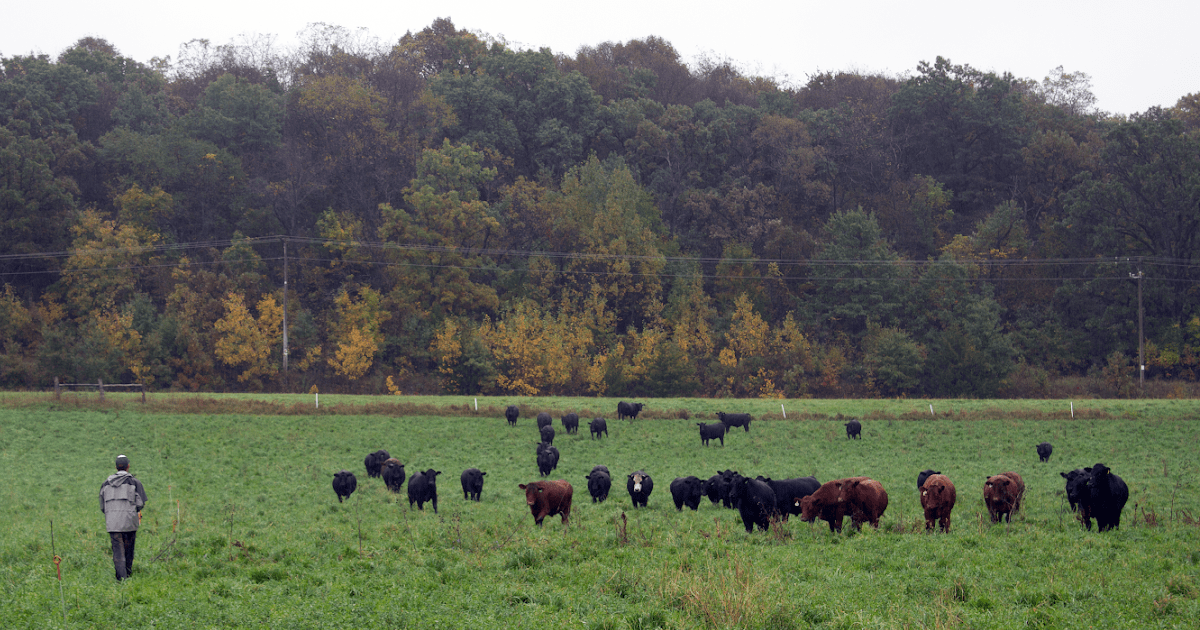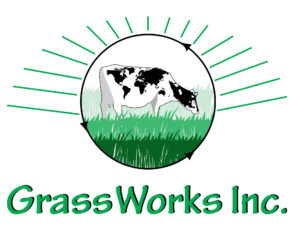This post was produced in collaboration with Grassland 2.0.
Well-managed grazing practices can be profitable, enjoyable, and good for the land. As you get started grazing, nothing will be more valuable to you than talking with other graziers, and grazing specialists, in your area. This list is intended to help you find answers to your questions as well as connect with local networks that can support you as you’re getting started.
 1. Ask a grazier
1. Ask a grazier
Chat directly with some of the Midwest’s most experienced graziers in the Ask-A-Grazier Facebook group.
2. Don’t miss this grazing conference
The annual GrassWorks Grazing Conference brings together graziers from across Wisconsin and the Driftless area each winter. It is truly a conference “of graziers, by graziers, for graziers”.
3. Find your network
Check out the new Midwest Grazing Exchange to find landowners or graziers interested in custom grazing partnerships.
4. Financial planning
Grazing has to make sense for you financially. Production levels are less important for the future of your farm than your profitability. If you have been managing livestock for a while, the Center for Integrated Agricultural System’s Livestock Compass developed by Grassland 2.0 collaborators can help you make sense of your numbers and look for ways to improve profitability. Grassland 2.0 is also working to develop “GrazeScape”, a new tool for planning on-farm grazing management.
 5. Fundamental videos
5. Fundamental videos
The Pasture Project’s Grazing Fundamentals Video Series provides an excellent farm’s-eye-view of important grazing concepts and equipment. They also have a video tutorial on fencing systems and watering you can check out.
6. Try this cash flow calculator
The Pasture Project’s Pasture-Raised Beef Calculator provides five-year cash flow projections and a value calculator for purchase and sales decisions (it is designed for beef but can be modified to be appropriate for any pasture-based animal production).
7. Yield calculator
Are you thinking about direct marketing meats? You can use the Cornell Meat Price & Yield Calculator to help you set prices for your products.

 8. Extension guides
8. Extension guides
Pastures for Profit: A Guide to Rotational Grazing is a free UW-Madison Extension guide providing an overview of every aspect of managed grazing. The University of Minnesota Extension also have a Grazing Systems Planning Guide which can be a great resource.
 9. Online classes
9. Online classes
DGA’s Managed Grazing Innovation Center (MGIC) offers six online classes that are open to the public.
10. Add these manuals to your reading list
Books like the GrassWorks Grazing Guide or Jim Gerrish’s Missouri Grazing Manual provide a good foundation for folks looking for additional information. Also, ATTRA, also known as the National Sustainable Agriculture Information Service, has a Grazing Planning Manual and Workbook with checklist and templates to get you started.


 1. Ask a grazier
1. Ask a grazier 5. Fundamental videos
5. Fundamental videos
 8. Extension guides
8. Extension guides 9. Online classes
9. Online classes